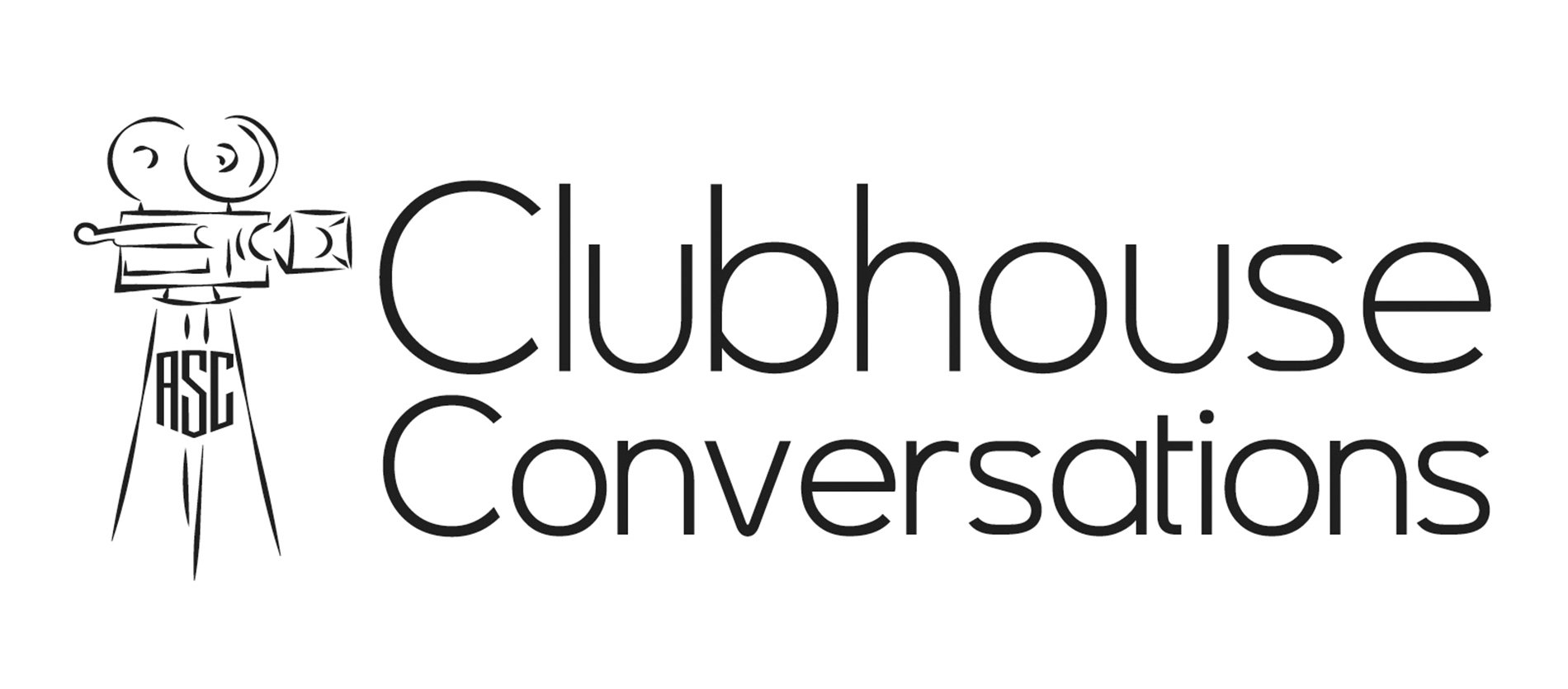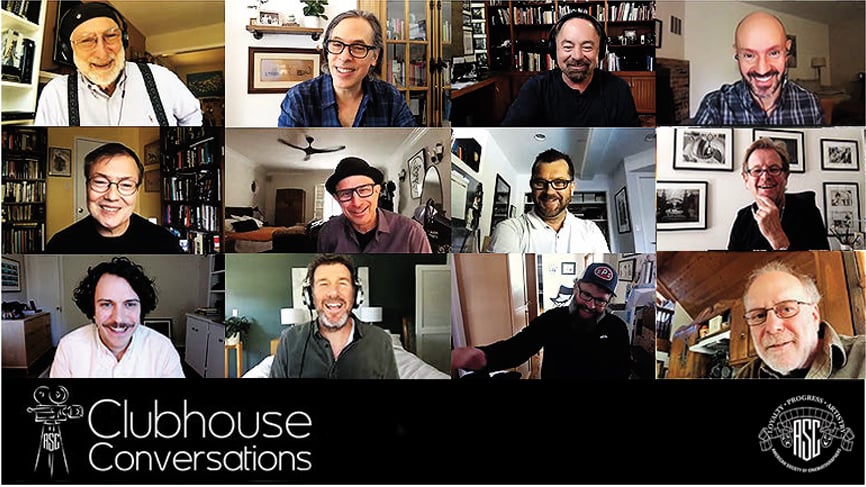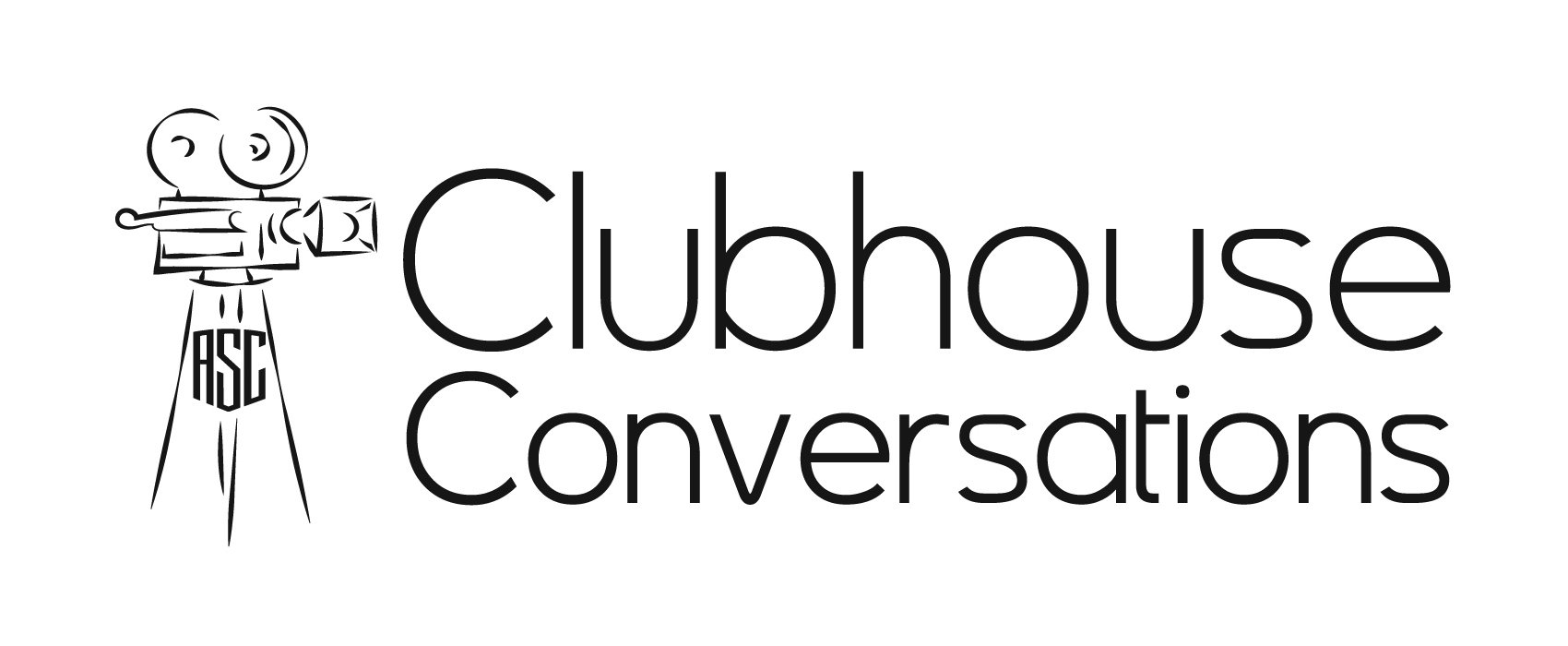
ASC Clubhouse Conversations 2021 Video Collection
In this interview series, cinematographers share their inspirations and experiences while analyzing their work and offering an informative look at their creative process.

In this interview series, leading cinematographers share their inspirations and experiences while analyzing their work and creative process.
Though these events are traditionally held live at the ASC Clubhouse in Hollywood with a guest audience, allowing for their participation, concerns about COVID-19 have changed our procedure for this year, taking the discussions online.
Our 2021 episodes so far:
The Dissident: Writer-Director Bryan Fogel and Cinematographer Jake Swantko, interviewed by Buddy Squires, ASC
In this new 84-minute episode, interviewer Buddy Squires, ASC speaks with writer-director Bryan Fogel and cinematographer Jake Swantko about making their harrowing documentary The Dissident — in theaters and be available on demand starting January 8.
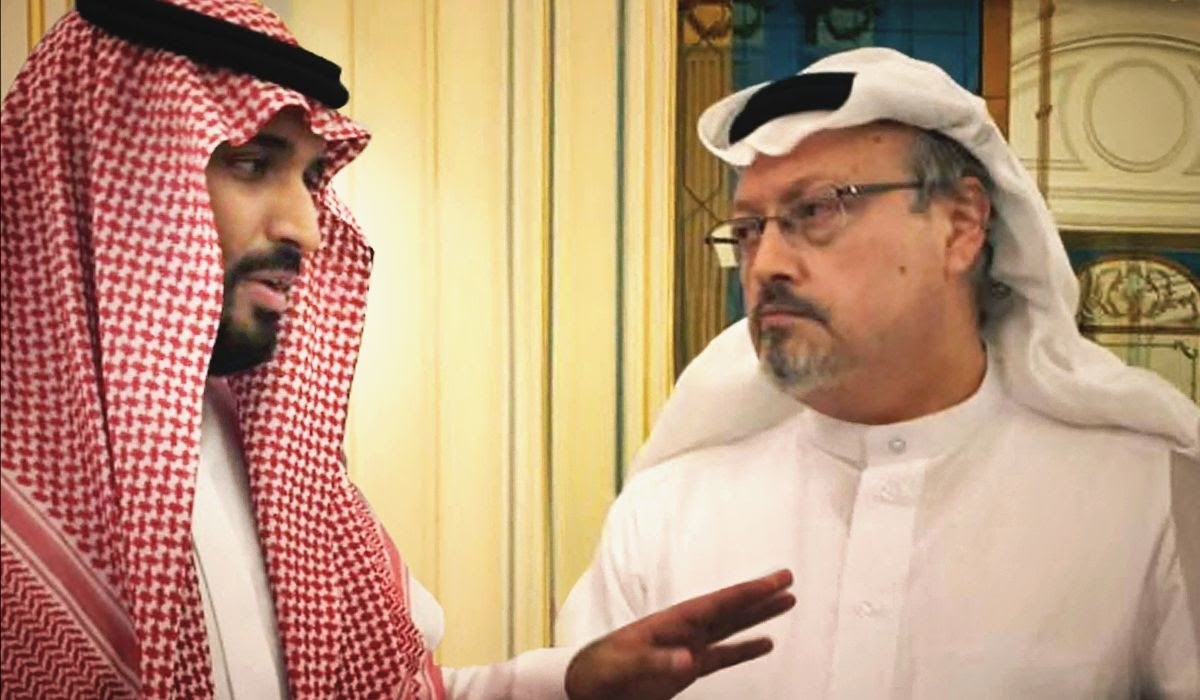
The film is a real-life exposé on the murder of Washington Post journalist Jamal Khashoggi on Oct. 2, 2018 by Saudi agents in Istanbul.
Swantko previously worked with Fogel on Icarus (which earned Fogel and producer Dan Cogan the Academy Award for Best Documentary Feature in 2018).
Regarding the visual style they sought for The Dissident, Fogel told American Cinematographer, “What Paul Greengrass did in the Bourne movies was a real inspiration for us. They feel so real, with huge vérité elements.”
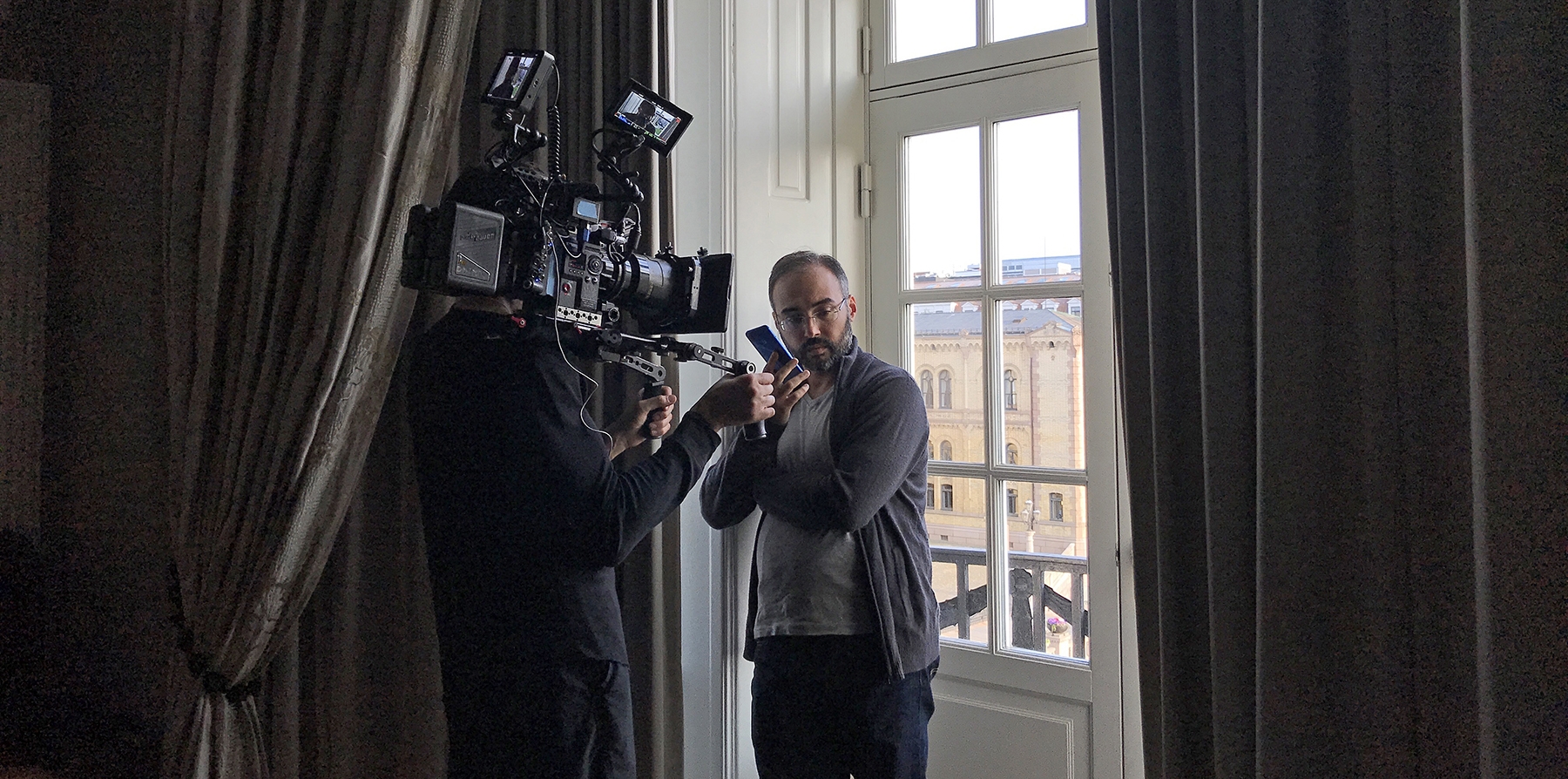
The result is a film that goes beyond simply documenting facts, to eliciting a strong emotional tension that keeps the viewer riveted throughout, as the documentarians provide compelling testimony that Khashoggi was murdered at the express orders of Mohammed bin Salman (aka “MBS”), the Crown Prince of Saudi Arabia.
Squires is an Oscar-nominated, Emmy-winning cinematographer whose many non-fiction credits include Jazz, The War, Baseball, The Roosevelts: An Intimate History and The Vietnam War, all made in collaboration with documentarian Ken Burns.
Waiting for the Barbarians: Cinematographer Chris Menges, ASC, BSC and Producer Michael Fitzgerald, interviewed by John Bailey, ASC
In this hour-long episode, cinematographer Chris Menges, ASC, BSC and producer Michael Fitzgerald discuss their compelling period drama with interviewer John Bailey, ASC.
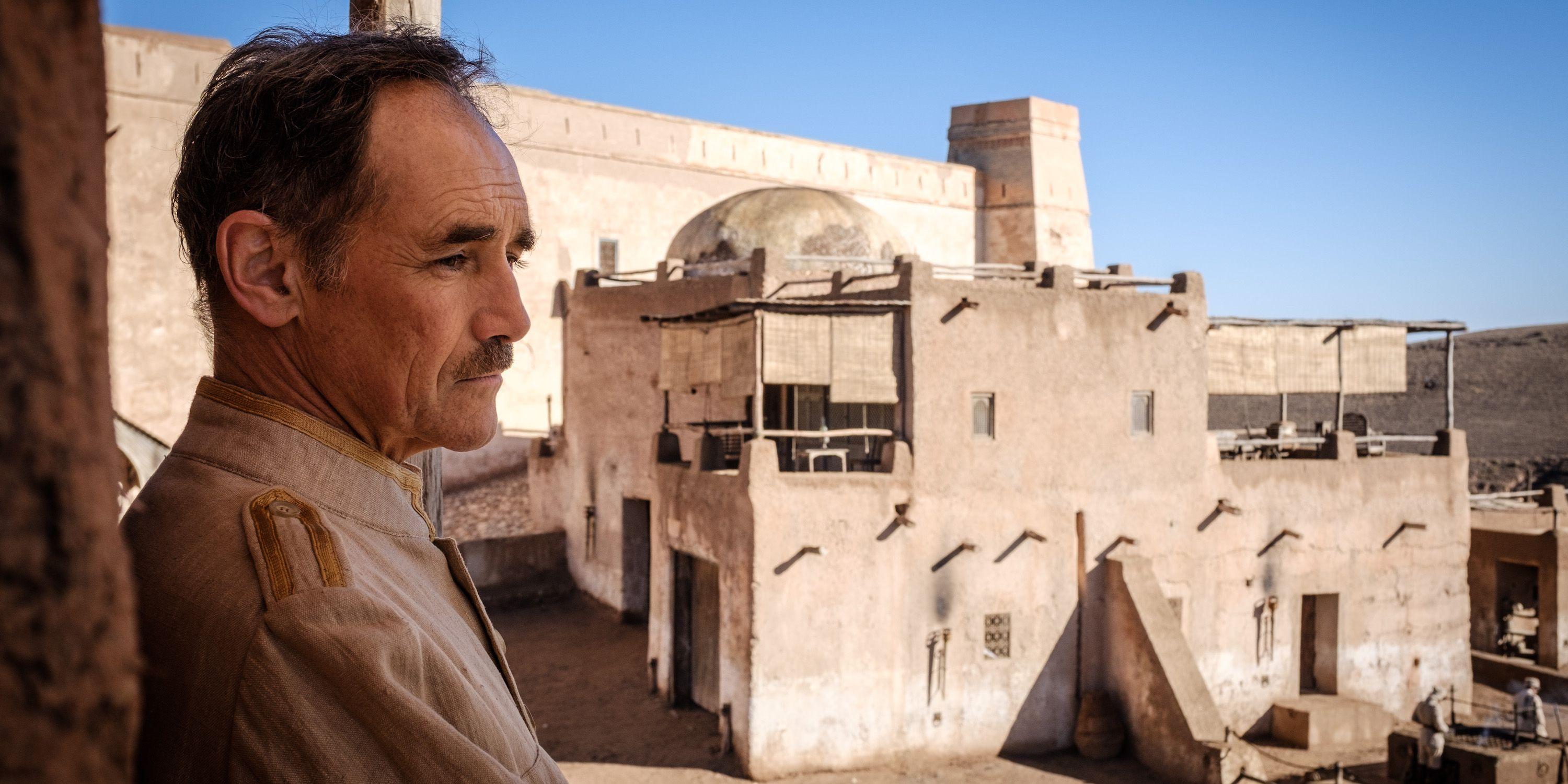
Based on the 1980 novel by J.M. Coetzee and directed by Ciro Guerra, the film unfolds as the Magistrate of an isolated frontier settlement on the border of an unnamed empire (Mark Rylance) looks forward to an easy retirement until the arrival of Colonel Joll (Johnny Depp), whose task it is to report on the activities of the “barbarians” and on the security situation on the border. He conducts a series of ruthless interrogations, which leads the Magistrate to question his loyalty to the empire.

Largely shot on location during a tight 37-day schedule in the deserts of Morocco outside Marrakesh, the snow-capped Atlas Mountains served as the brutal story’s backdrop. Menges, working largely with natural light and shooting with Arri Alexa cameras, employs extreme contrast with deep shadows and hot highlights, capturing the tension of the drama.
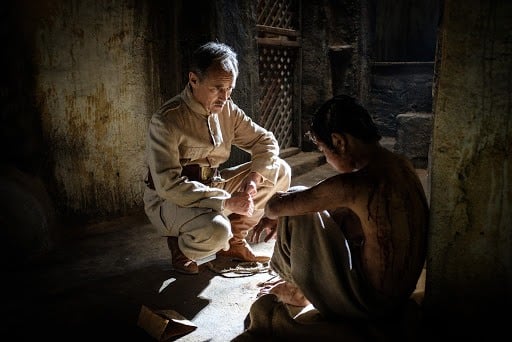
A two-time Oscar winner — for The Killing Fields and The Mission — Menges previously collaborated with producer Michael Fitzgerald on films including The Pledge and The Three Burials of Melquiades Estrada. Fitzgerald worked for 30 years to bring Waiting for the Barbarians to the screen.
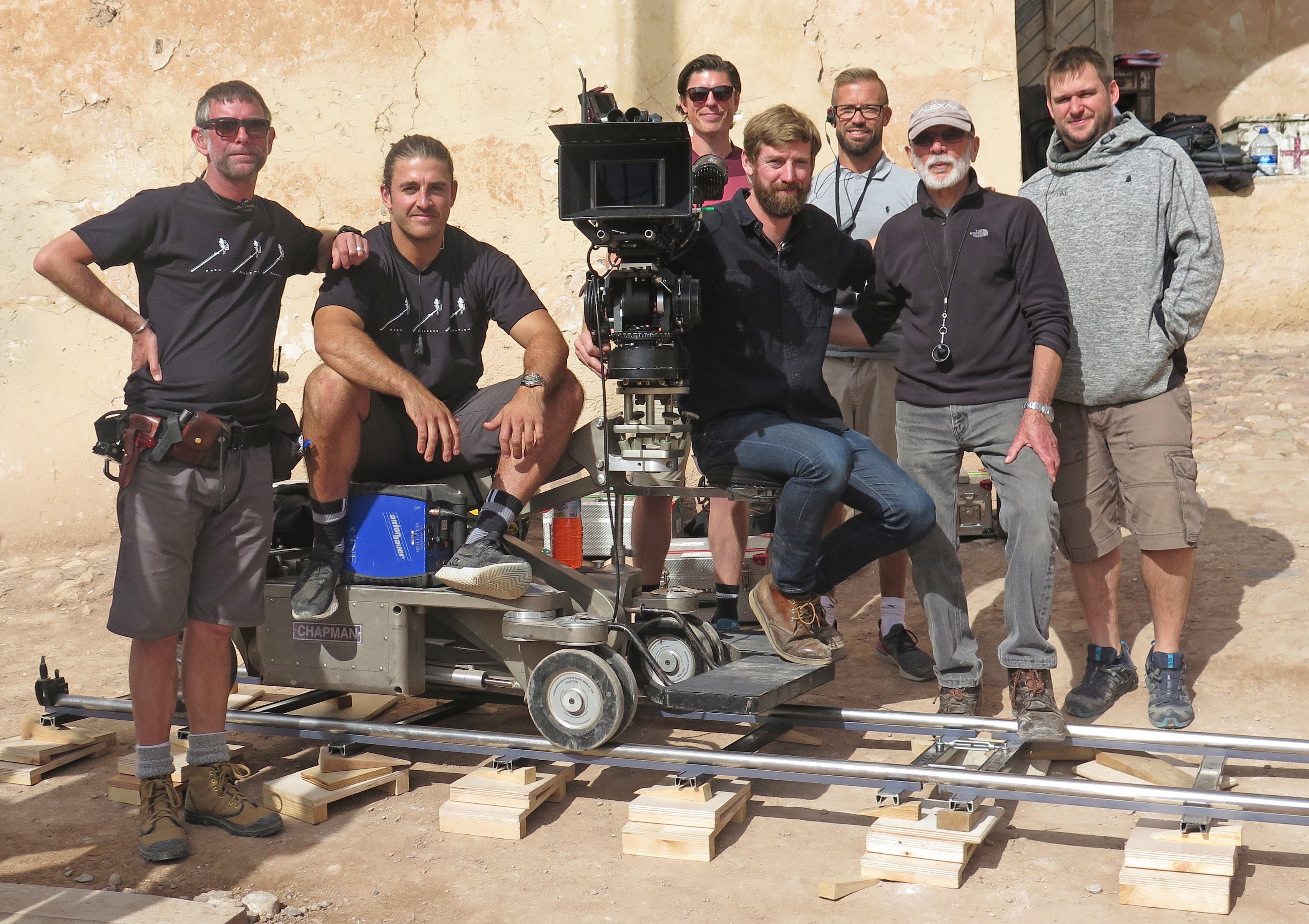
Menges (seen above with his crew, second from right) was honored with the ASC International Award in 2010 and his other credits include The Reader (co-photographed with Roger Deakins, ASC, BSC) Extremely Loud & Incredibly Close, Stop-Loss, Dirty Pretty Things, Michael Collins, The Boxer and Local Hero.
Interviewer John Bailey is a veteran cinematographer and film scholar, whose credits include The Bill Chill, The Accidental Tourist, As Good as It Gets, The Way Way Back and A Walk in the Woods. He recently served two terms as the president of the Academy of Motion Pictures Arts and Sciences and was honored with the ASC Lifetime Achievement Award in 2015.
The Trial of the Chicago 7: Phedon Papamichael, ASC interviewed by Lawrence Sher, ASC
In this 70-minute interview, cinematographer Phedon Papamichael, ASC discusses his visual approach to this fact-based, 1960s-set drama depicting the courtroom battle following a violent confrontation between anti-Vietnam war counterculture idealists and the Chicago police. The real-life defendants — Abbie Hoffman, Jerry Rubin, Tom Hayden, Rennie Davis, David Dellinger, Lee Weiner, John Froines and Bobby Seale — were accused of trying to incite a riot, and the establishment used every means possible to suppress their voice.
Written and directed by Aaron Sorkin, the Netflix release was photographed in the fall of 2019 on actual locations in Chicago where the action took place and in New Jersey.
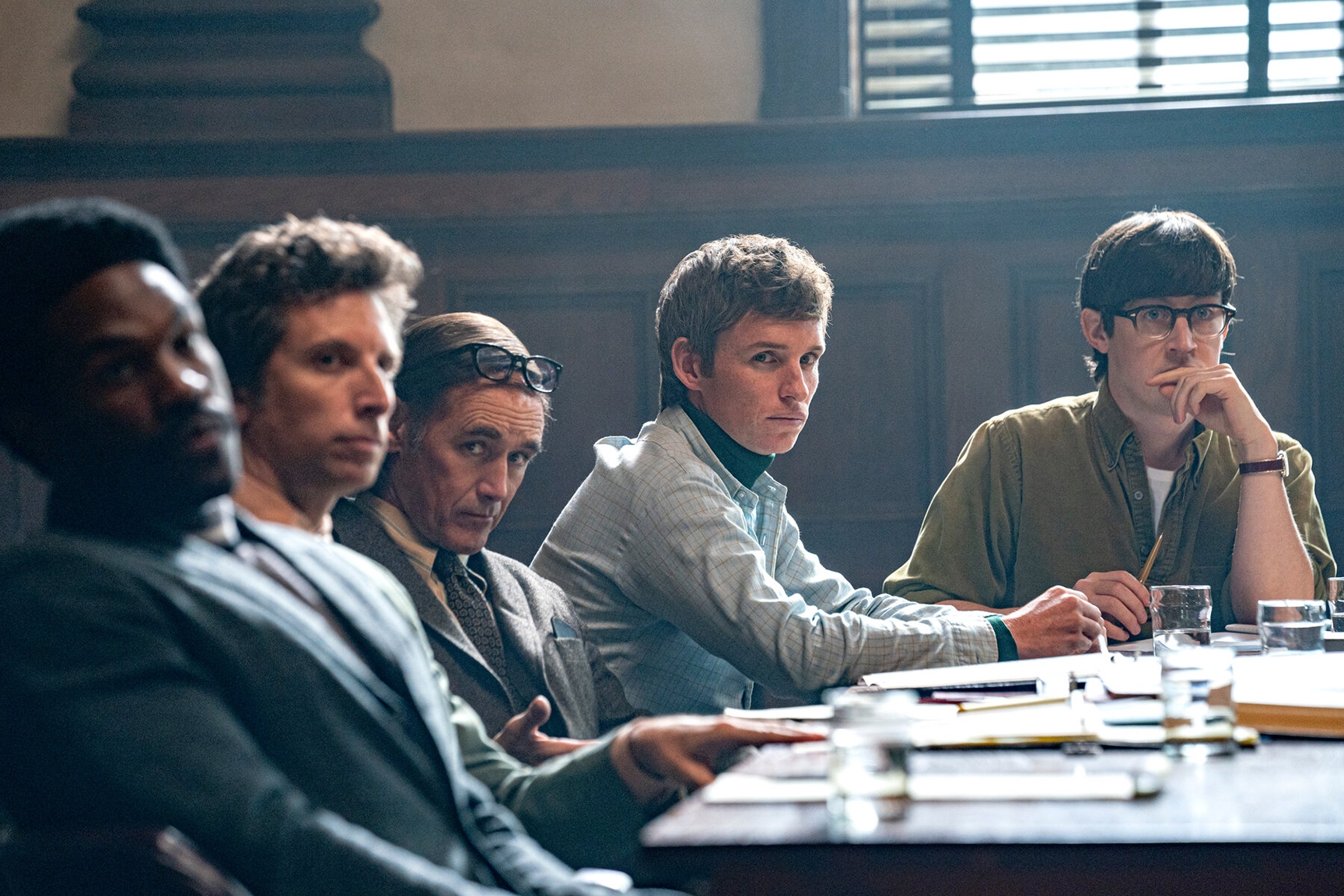

Papamichael (seen above in the center of the court during the Chicago 7 shoot) was born in Athens, Greece. He worked as a photojournalist before transitioning into cinematography with short films. His other feature credits include Unstrung Heroes, Unhook the Stars, The Million Dollar Hotel, 27 Missing Kisses, Moonlight Mile, Walk the Line, 3:10 to Yuma, Pursuit of Happyness, The Descendants, The Ides of March, Nebraska (for which he earned Academy Award and ASC Award nominations), Downsizing and Ford v Ferrari (earning another ASC Award nomination).
Born in New Jersey, interviewer Lawrence Sher, ASC served as a camera assistant and gaffer before working his way to director of photography. His credits include Kissing Jessica Stein; Garden State; I Love You, Man; Paul; The Dictator and Godzilla: King of the Monsters. His most recent feature, Joker marked the sixth collaboration between Sher and director Todd Phillips, following The Hangover trilogy, Due Date and War Dogs. For his camerawork on Joker, Sher earned the Golden Frog at Camerimage and Academy and ASC Award nominations.
The Mauritanian: Cinematographer Alwin H. Küchler, BSC and Director Kevin Macdonald interviewed by Rodrigo Prieto, ASC, AMC
Cinematographer Alwin H. Küchler, BSC and director Kevin Macdonald detail their collaboration on this compelling true-life human drama about a suspected terrorist (played by Tahar Rahim, seen below) imprisoned by the U.S. at the Guantánamo Bay detention camp without charges for years and the legal team (Jodie Foster and Shailene Woodley) tasked with defending his rights. The STX Films release will open on February 12.

Born in Düsseldorf, Germany, Küchler got his career start with an apprenticeship to a fashion photographer. He was later asked by a friend to shoot his short film as part of a class project and Küchler knew he had found his calling. He enrolled at the National Film and Television School in London, (NFTS), where he met director Lynne Ramsay and started working with her on short films. Together, they made their 1998 breakthrough feature Ratcatcher. They would reteam for the feature Morvern Callar. The cinematographer’s other credits include Solitary Man, Sunshine, Hanna, Steve Jobs and Divergent.
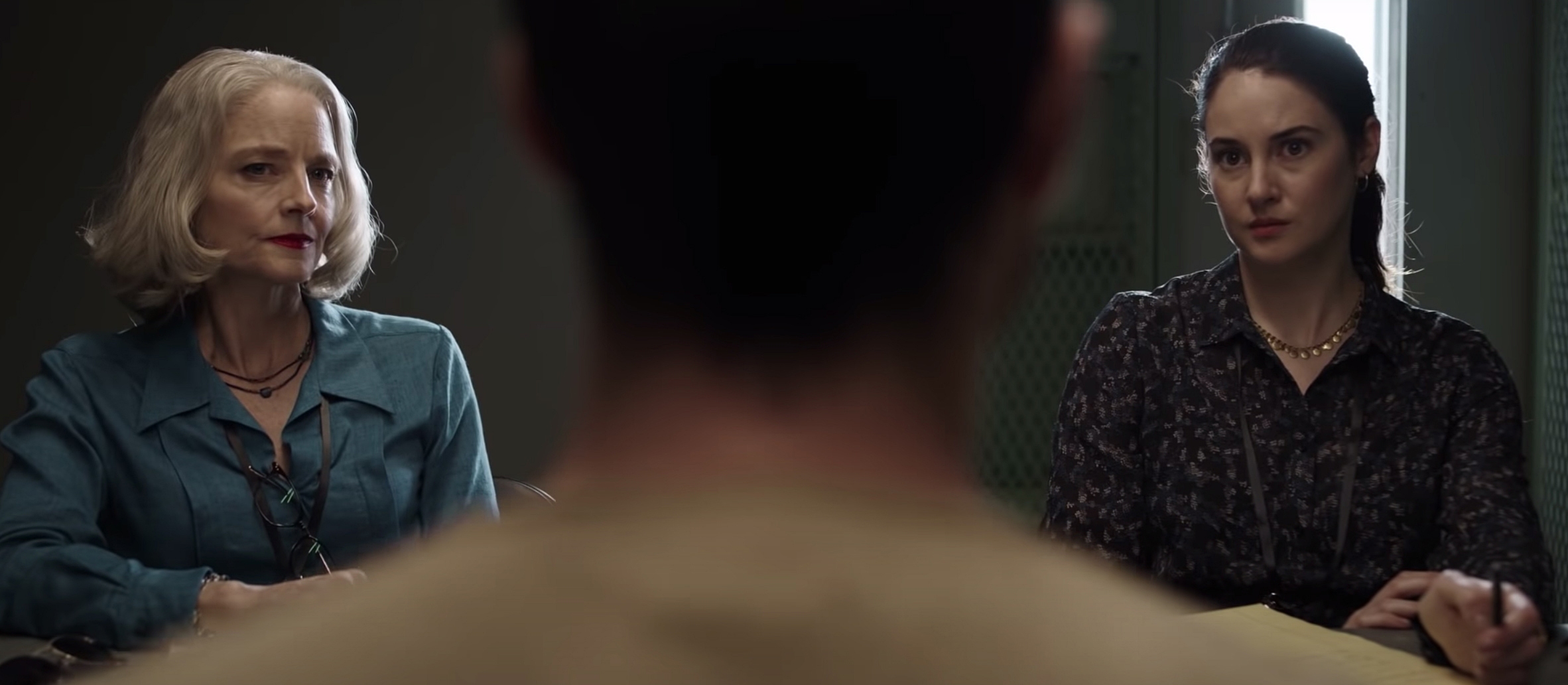
Born in Glasgow, Scotland, Macdonald’s other credits include the documentaries One Day in September (earning the Academy Award for Best Documentary Feature), Touching the Void, Marley and Whitney, and the narrative features State of Play, The Eagle, How I Live Now and The Last King of Scotland.
Interviewer Rodrigo Prieto, ASC, AMC is best known for his cinematography in such feature films as Amores perros, 8 Mile, Frieda, Brokeback Mountain, Argo, The Wolf Wall Street, Silence and The Irishman.

Fatale: Dante Spinotti, ASC, AIC and Director Deon Taylor interviewed by Richard P. Crudo, ASC
In this neo-noir thriller, a successful married man (Michael Ealy) engages in a one-night stand — only to find himself entangled in the latest investigation of a cunning police detective (Hillary Swank).
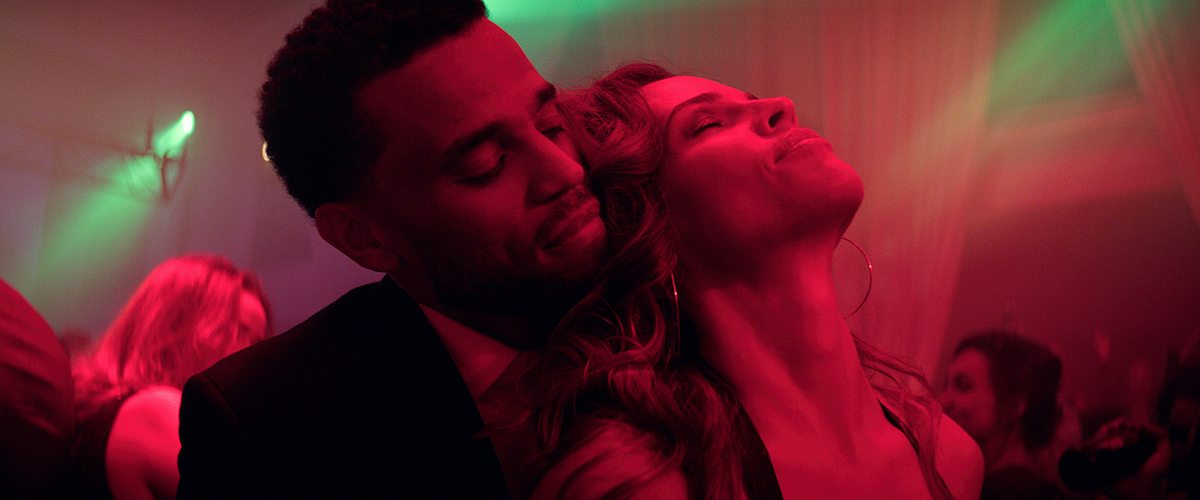
This 71-minute Clubhouse Conversations episode features Fatale cinematographer Dante Spinotti, ASC, AIC and director Deon Taylor — interviewed by Richard P. Crudo, ASC — and dives deep into their inspirations and creative collaboration.
Spinotti and Taylor previously worked together on the thrillers Traffik and Black and Blue.
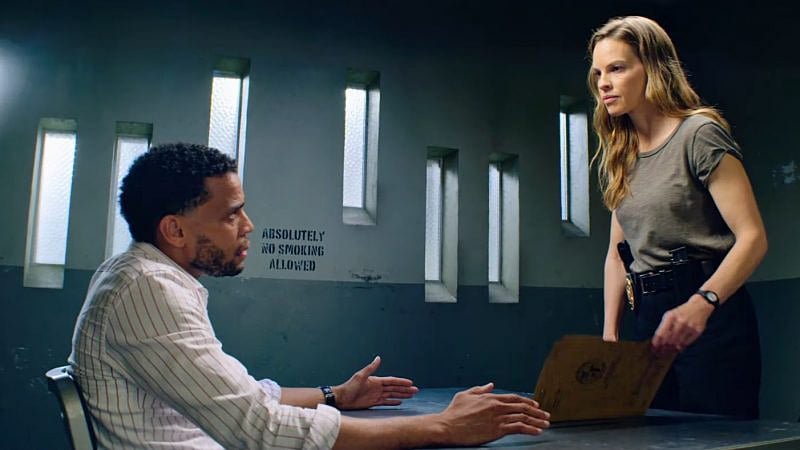
A native of Italy, Spinotti was honored with the ASC Lifetime Achievement Award in 2012. After gaining experience working in Italian TV and features, his first assignment in the U.S. was the stylish thriller Manhunter, directed by Michel Mann. The two would go on to collaborate on the films The Last of the Mohicans, Heat, The Insider and Public Enemies.
His other credits include Nell, The Quick and the Dead, The Mirror Has Two Faces, L.A. Confidential, Wonder Boys, Red Dragon and The Chronicles of Narnia: The Voyage of the Dawn Treader.
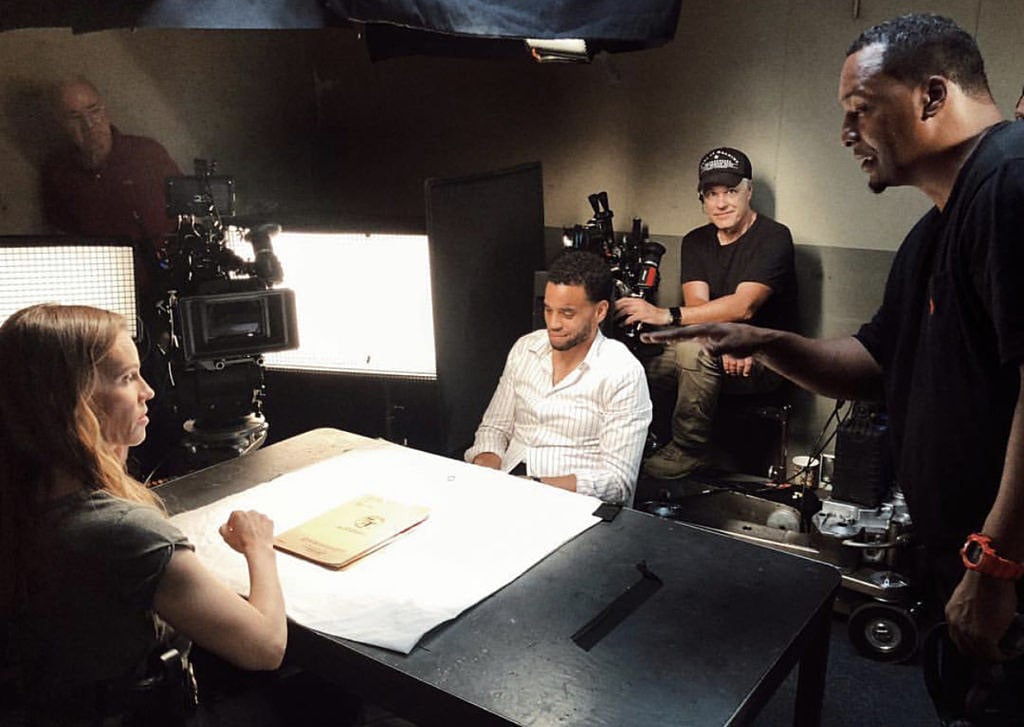
Hailing from Gary, Indiana, director Deon Taylor (above, on right, directing actors Hillary Swank and Michael Ealy) graduated from San Diego State University on a full basketball scholarship, went on to play professionally, and later became interested in filmmaking. He has written, co-written and directed dozens of feature films, TV series and special projects. His previous credits include Dead Tone, The Hustle, Nite Tales: The Movie, Chain Letter, Supremacy, Meet the Blacks, The Intruder and Black and Blue.
Interviewer Richard P. Crudo is a past president of the ASC. He gained formative experience working as a camera assistant and operator before becoming a director of photography and shooting features including Federal Hill, American Buffalo, American Pie, Outside Providence, Down to Earth and Brooklyn Rules. His television credits include the series Justified, Jane the Virgin and SWAT.
The Midnight Sky: Martin Ruhe, ASC interviewed by Eric Steelberg, ASC
Interviewed by Eric Steelberg, ASC, cinematographer Martin Ruhe, ASC details his visual approach to actor-director George Clooney’s post-apocalyptic sci-fi epic, which is also an intimate character study.
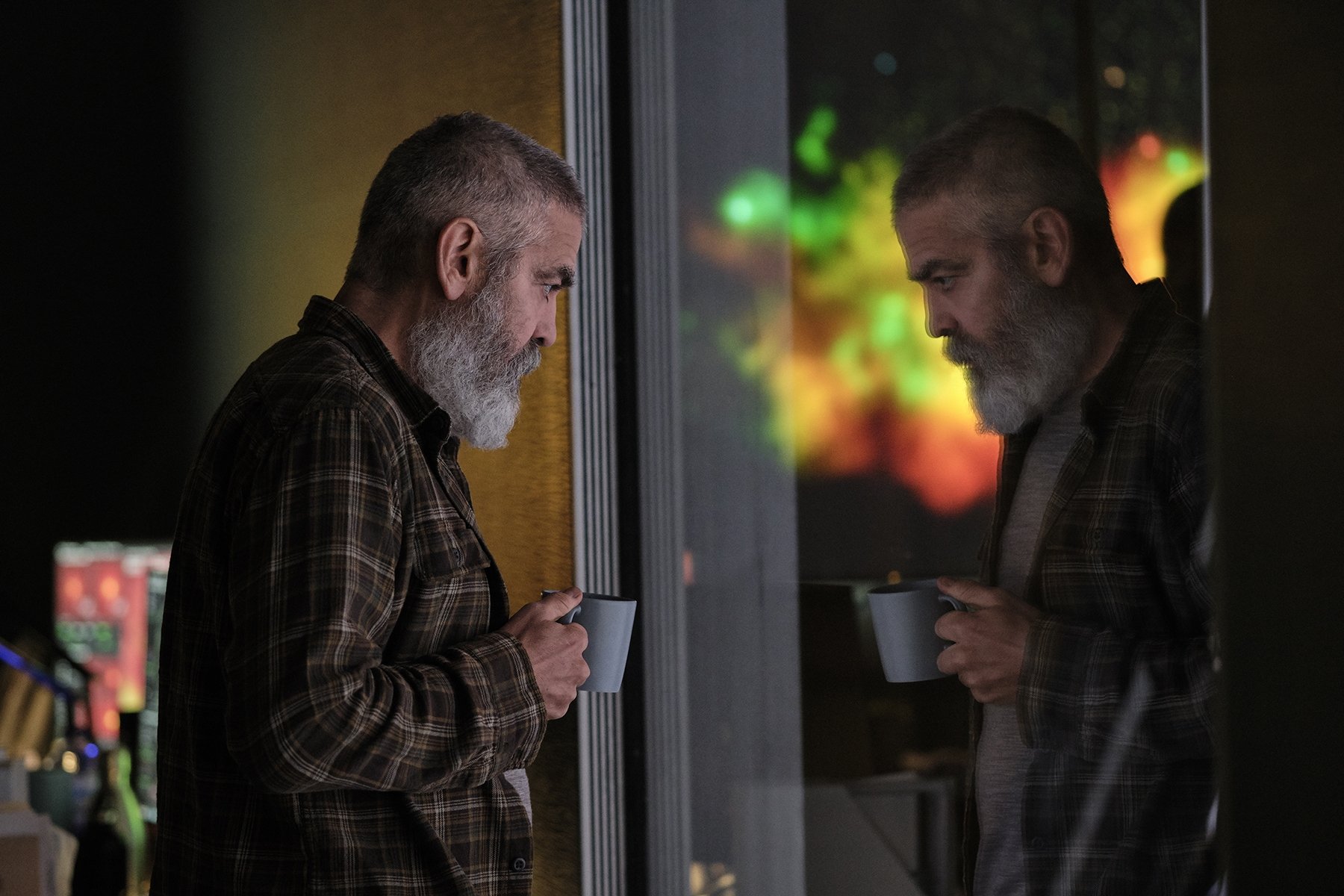
Based on the novel Good Morning, Midnight by Lily Brooks-Dalton, The Midnight Sky juxtaposes the journey of a crew of astronauts aboard the spacecraft Aether returning to Earth from a mission to K-23, a habitable moon of Jupiter, with the terrestrial efforts of scientist Augustine Lofthouse (George Clooney) to contact the crew and prevent them from returning home following a global catastrophe. Lofthouse, who lives alone within an otherwise abandoned Arctic research base, suffers from a terminal disease, so as he endeavors to communicate with the Aether crew, he must also survive his harsh reality.
The Midnight Sky is the third collaboration between Ruhe and Clooney (seen below), following the feature The American and the miniseries Catch-22 — the latter of which Clooney served on as executive producer, actor and director. “George and I were at the premiere of Catch-22 in Los Angeles, and he invited me to work on his next project,” Ruhe told American Cinematographer. “He explained the story was like a mixture of The Revenant and Gravity, and I thought that sounded great. He also referenced On the Beach.”
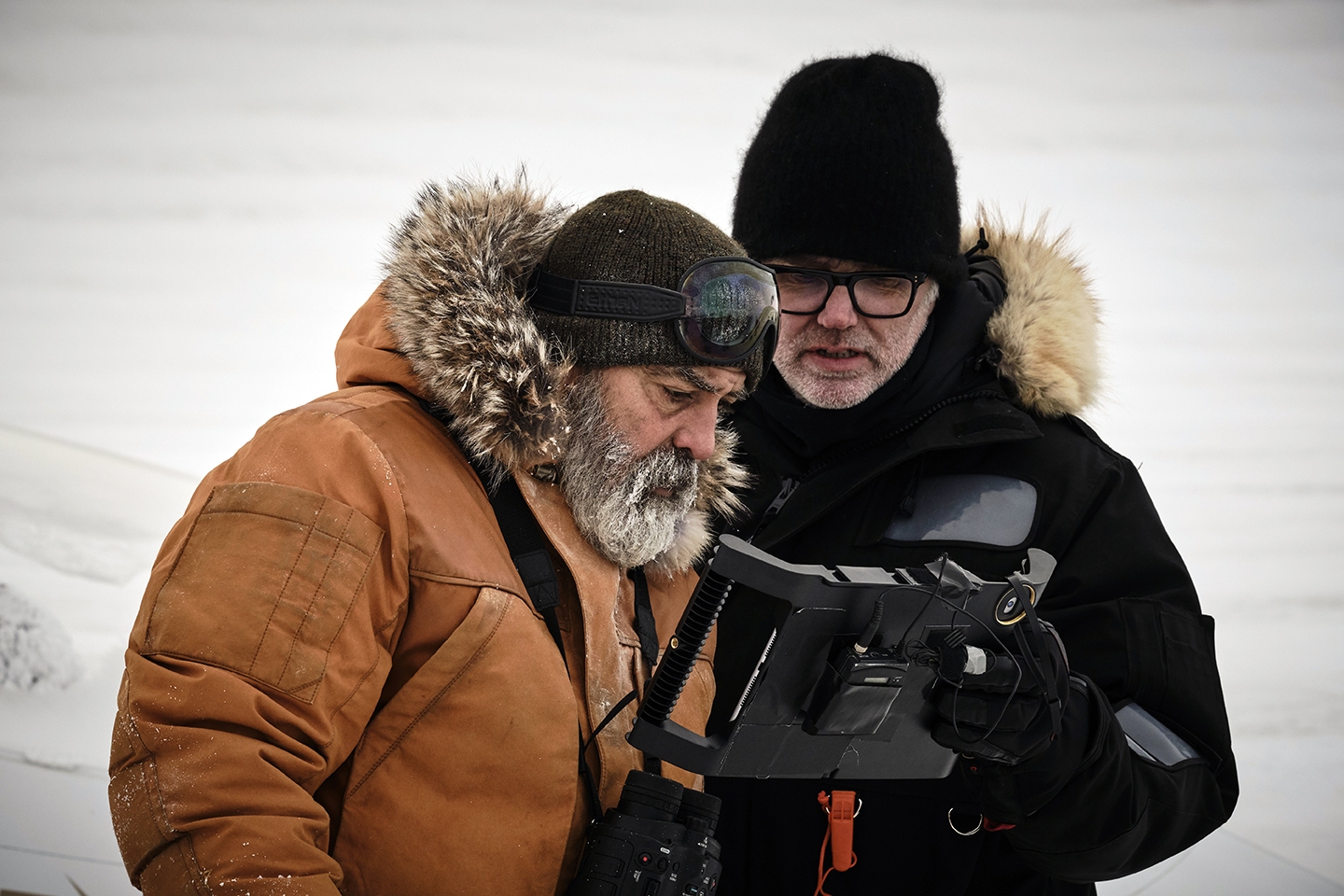
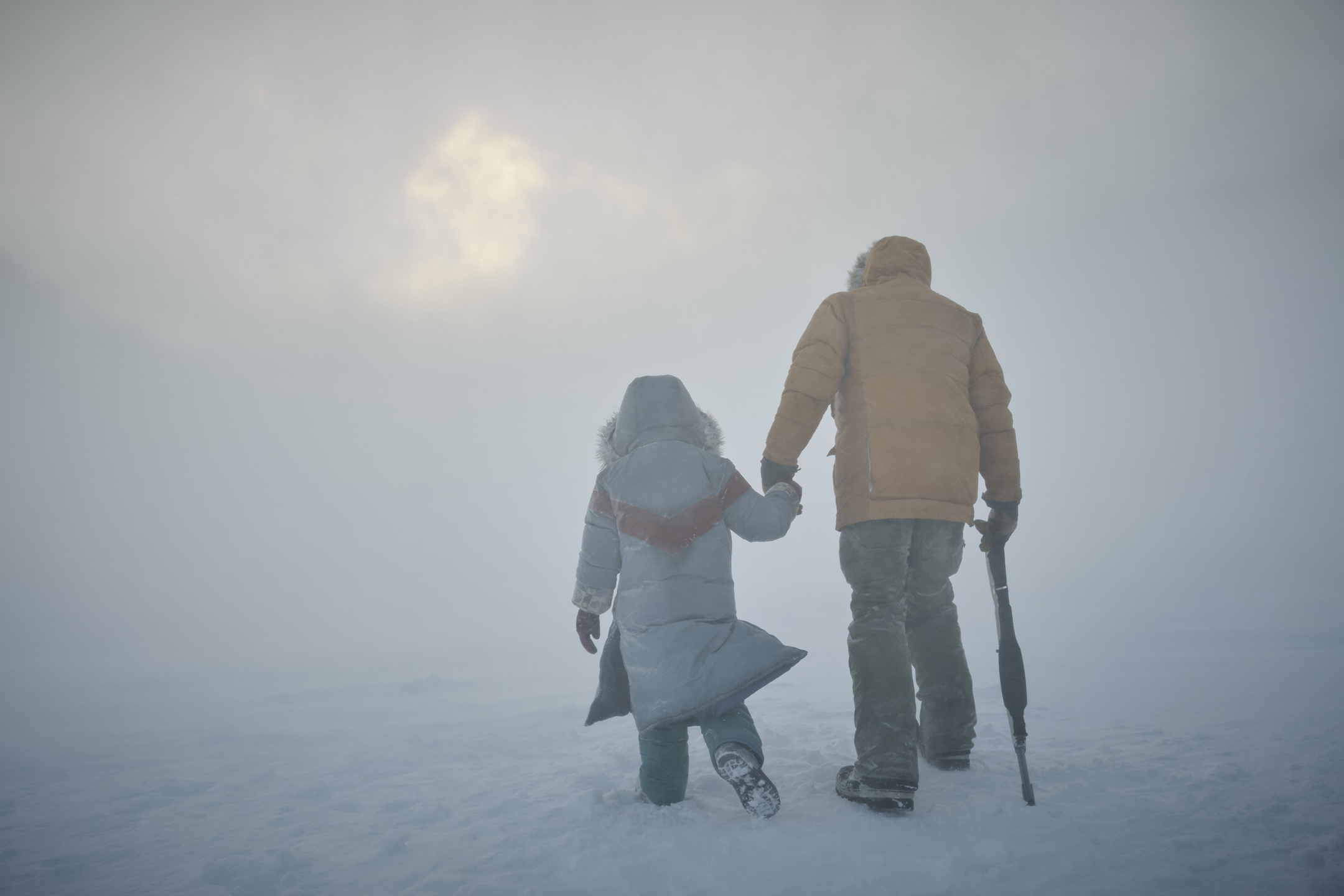
To capture the size and scope of the locations, Ruhe selected Arri Alexa 65 and Alexa Mini LF cameras paired with Arri Prime DNA and DNA LF prime lenses, respectively.
Ruhe collaborated closely with production designer Jim Bissell (E.T. — The Extra-Terrestrial, 300, Velvet Buzzsaw) and visual-effects supervisor Matt Kasmir (Kingsman: The Secret Service, Catch-22) as principal photography took place between November 2019 through February 2020, with production beginning on location at the Vatnajökull glacier in Iceland, which stood in for the exteriors of the Arctic research station.
At Shepperton Studios, the production deployed the StageCraft LED wall in-camera visual-effects process pioneered by Industrial Light & Magic (ILM) on the Disney + series The Mandalorian (ACFeb. ’20). For the background imagery, Kasmir oversaw the capture of live-action footage in Iceland from an array of five Alexa Minis.
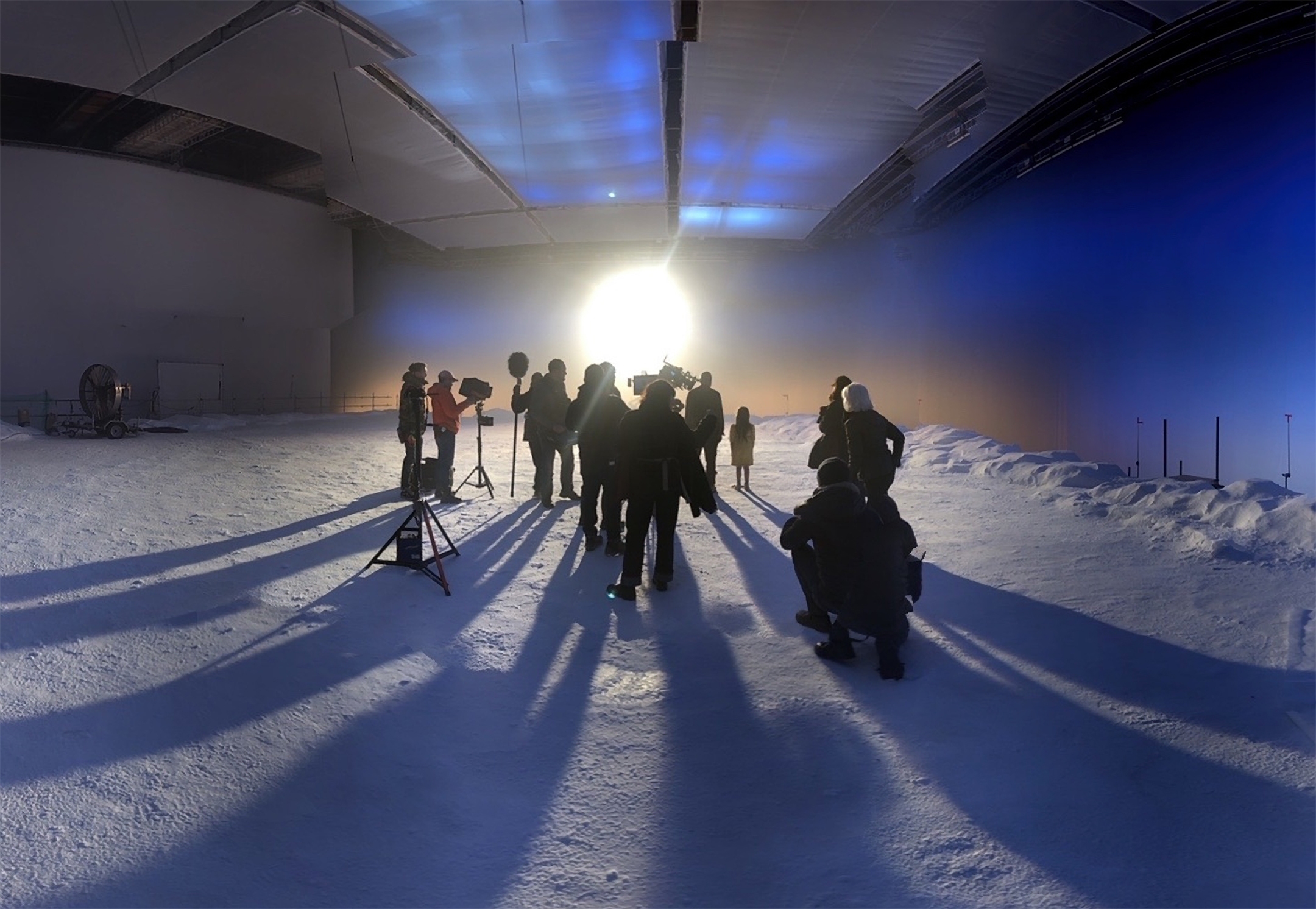
Ruhe says that the StageCraft process brought yet another layer of realism to the cinematography. “There’s a shot when Lofthouse is in the control room drinking coffee in the morning and looking out the window. All those reflections in his eyes and on the set are in-camera and real. We used the LED wall to achieve those reflections and basically light the set itself.”
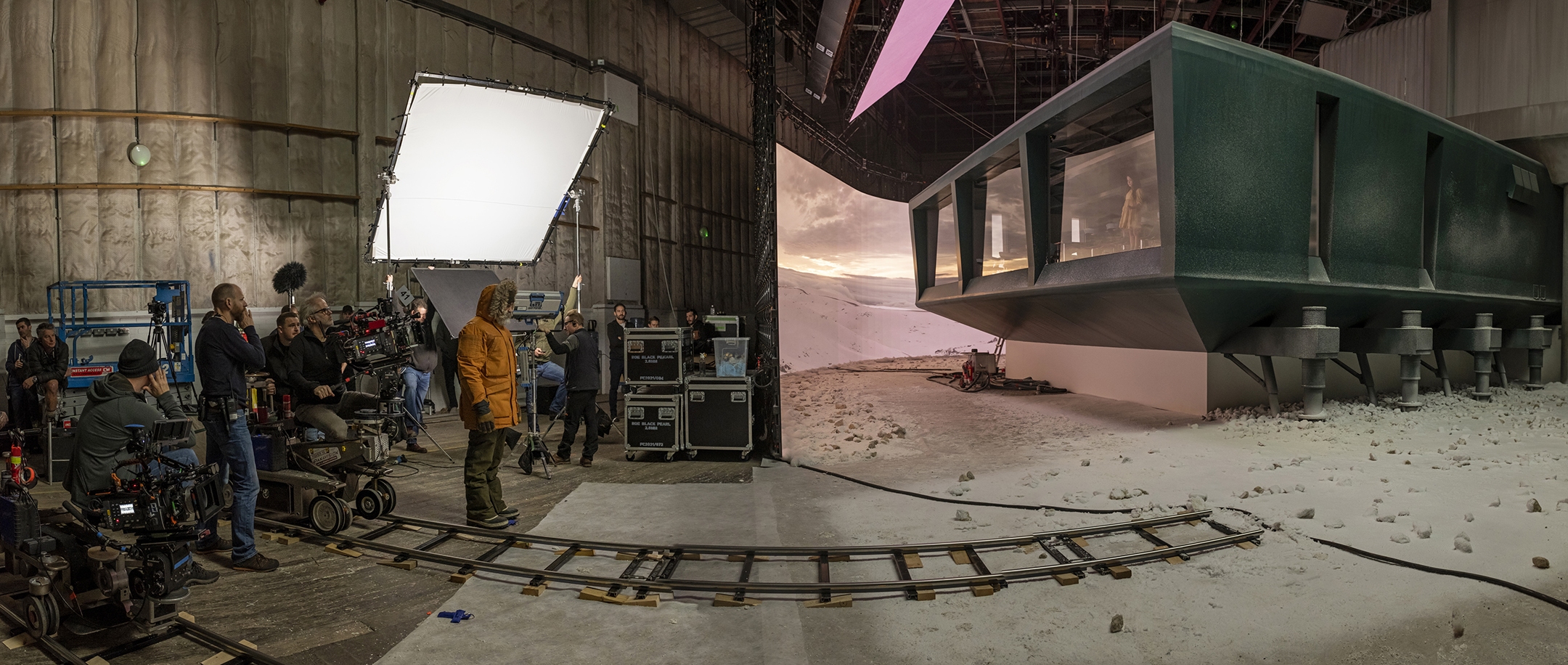
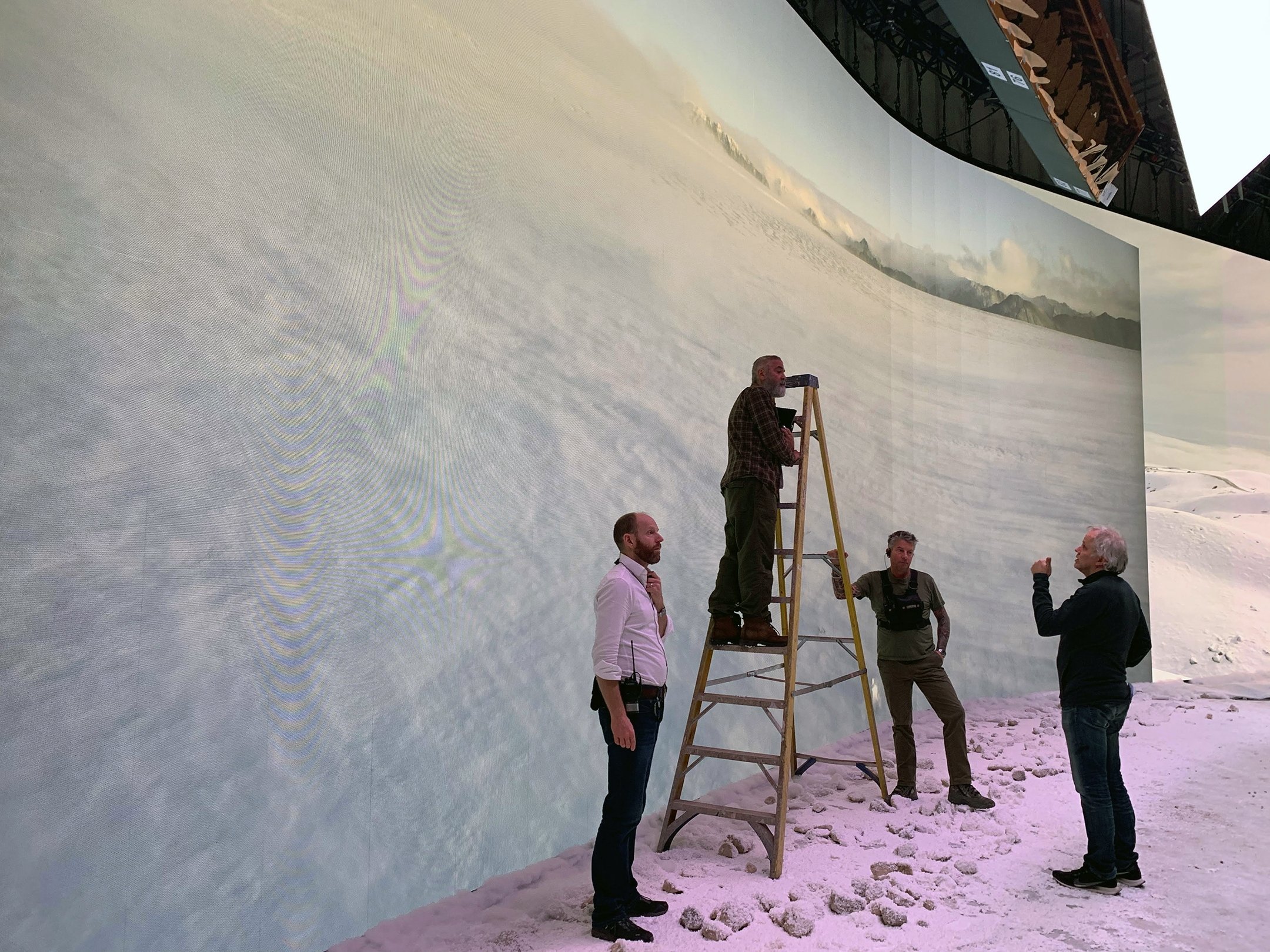
Ruhe was born in Paderborn, Germany, where he lived until he began military service in Augustdorf. After he was discharged, Ruhe departed Germany to study photography at the University of Seville in Spain.
Following his graduation, Ruhe moved to London, where he gained his first practical experience in the film industry working at Samuelson’s Camera Rental and Cell Animation at Motion-Control Studios. After a year of working, Ruhe returned to Germany to study at the State School of Optics and Photography in Berlin, and he earned a diploma as a state-approved first camera assistant.
Early in his career, Ruhe worked as a focus puller on commercials, music videos and television movies before moving into the role as director of photography. Since then, he has worked as a cinematographer on a number of music videos for artists including U2, Depeche Mode and Coldplay, and commercials for companies such as Coca-Cola, Adidas and Mercedes.
His other narrative credits include the theatrical features Control, The Countess and Harry Brown. His other television credits include the series Counterpart and the feature American Pastoral.
For his work on the telefilm Page Eight, Ruhe won the 2011 ASC Award for Outstanding Achievement in Cinematography in Motion Picture/Miniseries Television, and his work on the Mykki Blanco music video “High School Never Ends” garnered him the 2016 award for Best Cinematography in a Video at the International Film Festival of the Art of Cinematography Camerimage. Among his accolades, Ruhe has received awards from the Cannes Lions International Festival of Creativity, the London Film Festival, the German Commercial Awards and more.
He became a member of the ASC in 2018.
A Los Angeles native, interviewer Eric Steelberg’s upcoming supernatural comedy Ghostbusters: Afterlife is the cinematographer’s eighth feature film collaboration with director Jason Reitman, following The Front Runner; Tully; Men, Women & Children; Labor Day; Young Adult; Up In the Airand Juno. His other credits include 500 Days of Summer, Baywatch and the period biopic Dolemite Is My Name.
Nomadland: Cinematographer Joshua James Richards interviewed by Amelia Vincent, ASC
In this interview — conducted by Amelia Vincent, ASC — cinematographer Joshua James Richards discusses his naturalistic visual approach to this engaging drama, directed by Chloé Zhao.
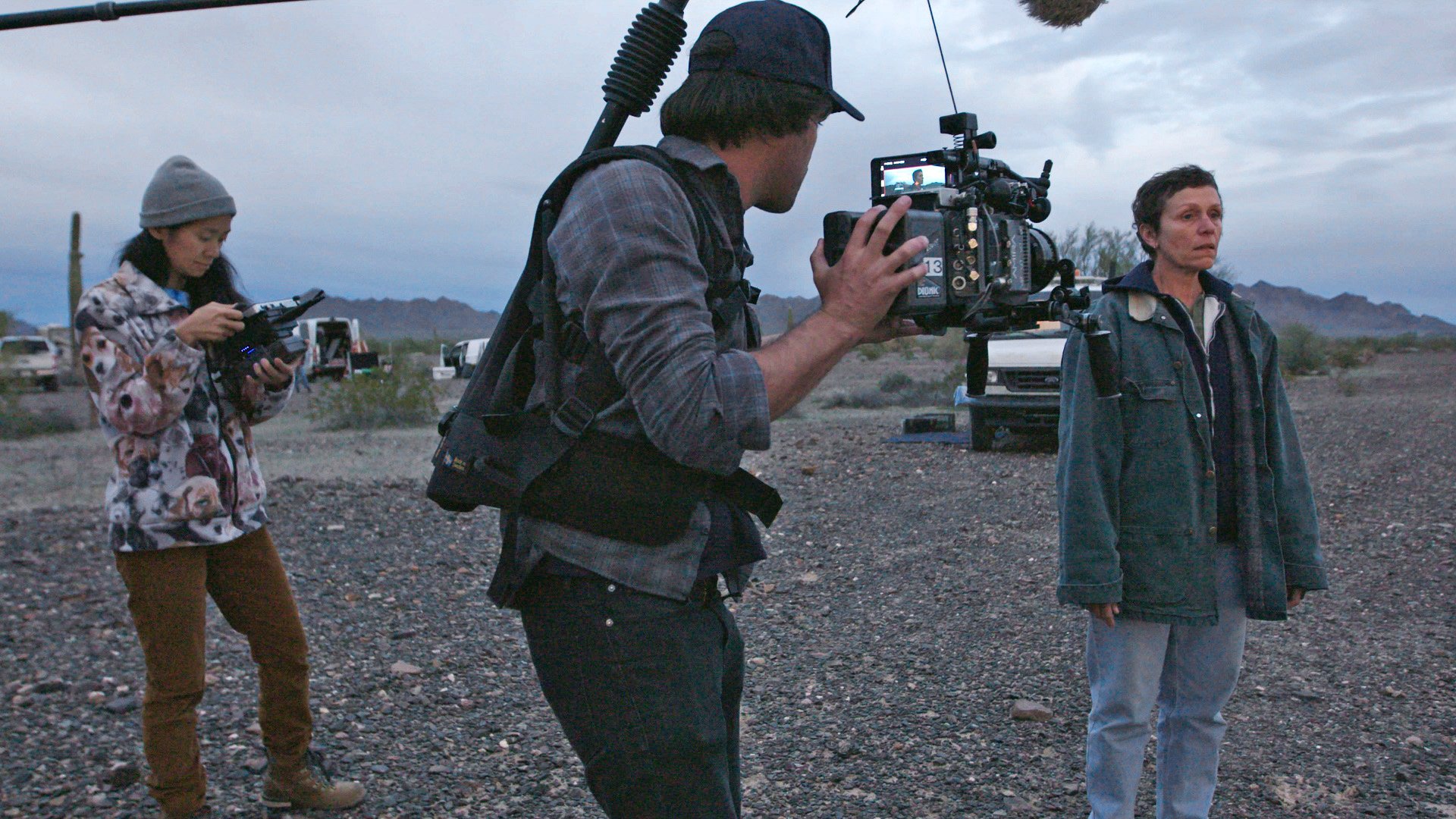
Nomadland follows Fern (Frances McDormand) as she travels through the West after losing her husband and her home. She survives on odd jobs, meets a community of kindred nomads, and continues alone on her healing journey through powerful American landscapes.
With its natural lighting and simply lit interiors, Richards’ cinematography renders the subtleties of sunlit Badlands, sunsets, and dusks, and reveals the dignity of humble faces.
The filmmakers were in part inspired by the work of director Terrence Malick and Emmanuel Lubezki, ASC, AIC on The New World (AC Jan. ’06) and The Tree of Life (AC Aug. ’11).
Richards is a two-time Film Independent Spirit Award nominee whose cinematography credits include Cannes Directors’ Fortnight Winner The Riderand Songs My Brothers Taught Me (both collaborations with Zhao), for which he also won Best Debut Cinematography at the Camerimage International Film Festival. Richards was nominated for a Critics Circle Award for best technical achievement for his second feature, the BAFTA-nominated God’s Own Country. For Nomadland, he was recently awarded the Golden Frog at Camerimage. The film has also earned the Venice Film Festival’s Golden Lion and Toronto International Film Festival’s People’s Choice Award.
Interviewer Amy Vincent is a native of Massachusetts and studied cinematography at the American Film Institute. Her credits include the features Eve’s Bayou, Hustle & Flow, Black Snake Moan and Footloose (2011) as well as episodes of True Blood, Eastbound & Down, Wayward Pines and Legion. She currently serves as a vice president of the ASC.
You’ll learn more about the filmmakers in this interview from the February 2021 issue of AC and this blog post by the author, which extends his analysis of their “New Naturalism” shooting approach.
Judas and the Black Messiah: Sean Bobbitt, BSC interviewed by Steven Fierberg, ASC
In this 75-minute video, cinematographer Sean Bobbitt, BSC and interviewer Steven Fierberg, ASC discuss director Shaka King’s provocative period drama revealing the inside story behind the Black Panther Party movement of the 1960s, as a small-time criminal was manipulated by the FBI to infiltrate the organization’s Illinois chapter.

Recently premiering at the Sundance Film Festival, Judas and the Black Messiah will be available in theaters and streaming on HBOMax starting February 12.
Hailing from Corpus Christi, Texas, Bobbitt gained early camera experience while shooting television news and documentaries, traveling around the globe, particularly in the Middle East, Northern Ireland, Africa and Asia.
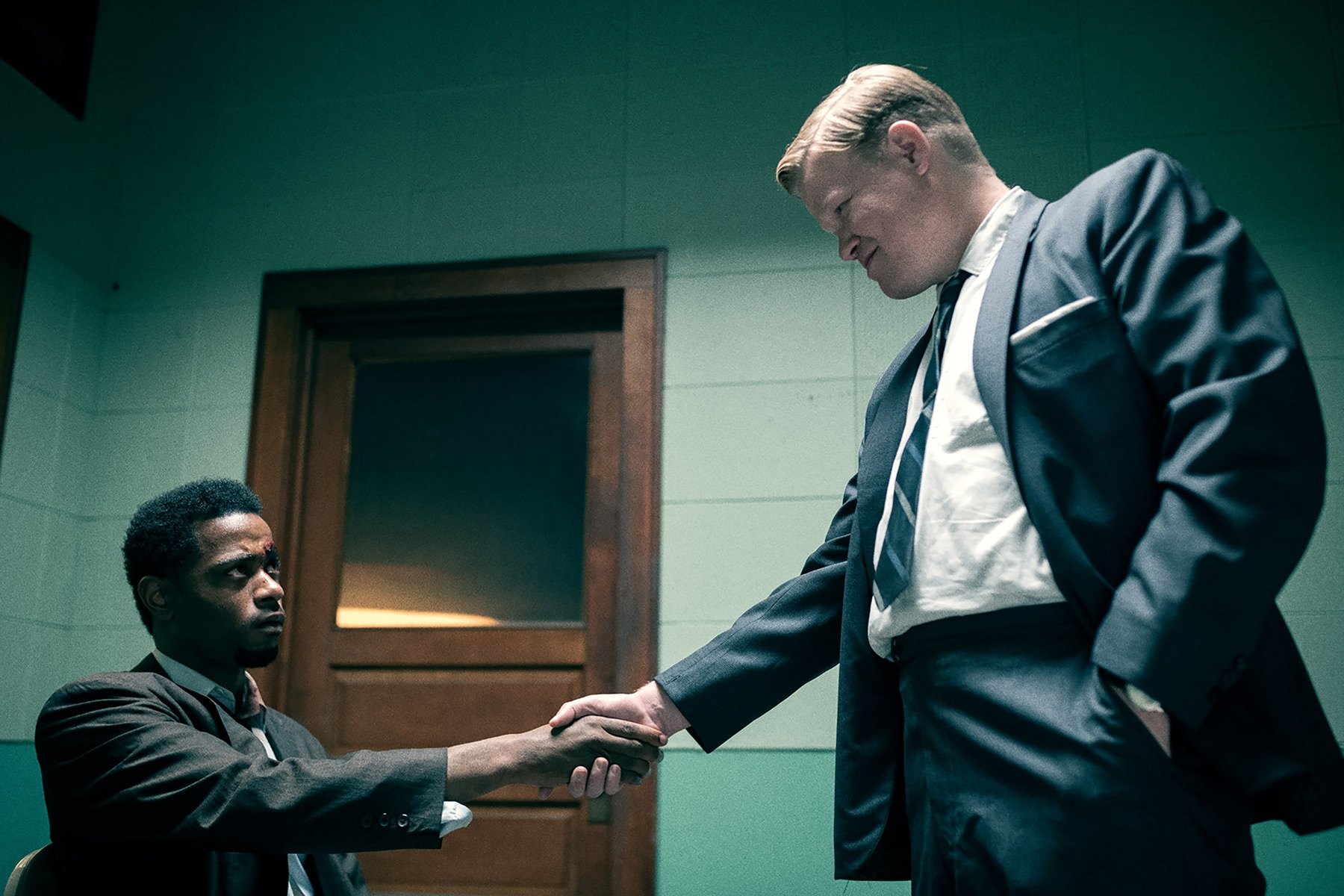
He began a long-running collaboration with director and video artist Steve McQueen on the shorts Western Deep, Charlotte, Gravesend, Static and Giardini. The two would have a breakthrough with the award-winning feature Hunger, followed by Shame and 12 Years a Slave. The filmmakers were recently interviewed by AC for their work on the gritty drama Widows.

Bobbitt’s other feature credits include the features The Place Beyond the Pines, The Killer Inside Me, Byzantium, Everyday, Oldboy, Kill the Messenger, Rock the Kasbah and The Rhythm Section (directed by Reed Morano, ASC).
His television work includes Sense and Sensibility, The Long Firm, The Canterbury Tales and the pilot to Game of Thrones.
Interviewer Steven Fierberg is an award-winning cinematographer whose feature credits include Secretary and Love & Other Drugs, while his extensive TV series credits include Entourage, Good Girls Revolt, The Affair, In Treatment and Emily in Paris. He currently serves as a vice president of the ASC.
